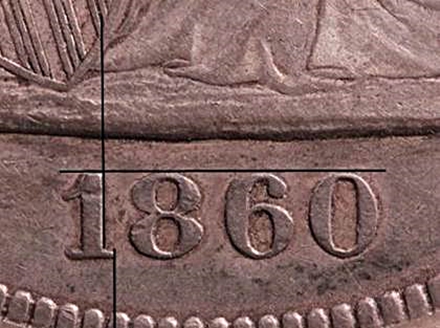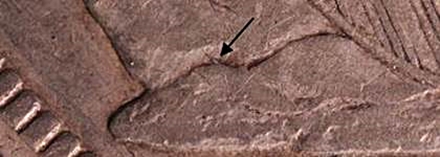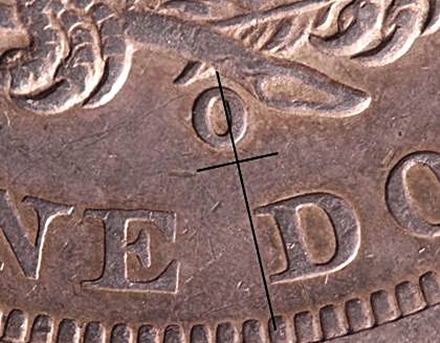|
|
Comments: This is the first of two uses of Obverse 4 and the second and final use of Reverse D. |
Obverse 4 The photo below shows the Obverse 4 attribution grid.  1860-O Obverse 4 attribution grid Obverse 4 also features a tine extending from the top of the left end of the scroll, shown in the following photo. This tine is the result of a die crack. The crack occurred very early. I've seen very few examples of this obverse die without it, so it's a good marker to look for, but not conclusive.  1860-O Obverse 4 tine off top of ribbon end
No later die states have been observed. OC-8 is found with all four obverse die states. |
The photo below shows the mintmark position for Reverse D.  1860-O Reverse D mintmark Reverse D displays no notable markers other than the mintmark position. This mintmark position is unique, highest of any for the year and centered very slightly left of directly under the intersection of the branch and feather tip.
|
| Photo credits:
Obverse 4: 1860-O PCGS XF40, from the Osburn-Cushing reference collection. Reverse D: 1860-O PCGS AU50, from the Osburn-Cushing reference collection. |
